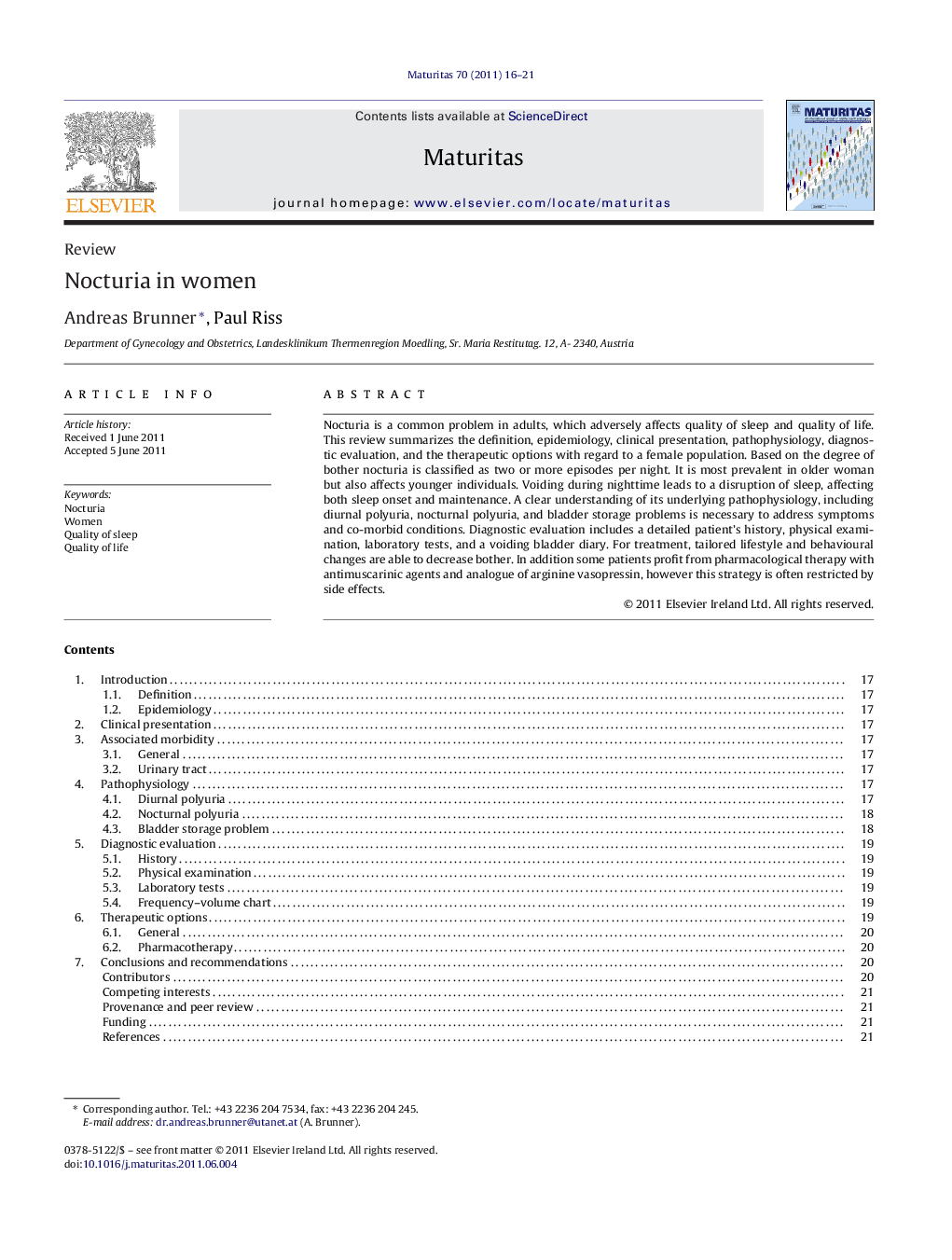| Article ID | Journal | Published Year | Pages | File Type |
|---|---|---|---|---|
| 10743681 | Maturitas | 2011 | 6 Pages |
Abstract
Nocturia is a common problem in adults, which adversely affects quality of sleep and quality of life. This review summarizes the definition, epidemiology, clinical presentation, pathophysiology, diagnostic evaluation, and the therapeutic options with regard to a female population. Based on the degree of bother nocturia is classified as two or more episodes per night. It is most prevalent in older woman but also affects younger individuals. Voiding during nighttime leads to a disruption of sleep, affecting both sleep onset and maintenance. A clear understanding of its underlying pathophysiology, including diurnal polyuria, nocturnal polyuria, and bladder storage problems is necessary to address symptoms and co-morbid conditions. Diagnostic evaluation includes a detailed patient's history, physical examination, laboratory tests, and a voiding bladder diary. For treatment, tailored lifestyle and behavioural changes are able to decrease bother. In addition some patients profit from pharmacological therapy with antimuscarinic agents and analogue of arginine vasopressin, however this strategy is often restricted by side effects.
Related Topics
Life Sciences
Biochemistry, Genetics and Molecular Biology
Ageing
Authors
Andreas Brunner, Paul Riss,
